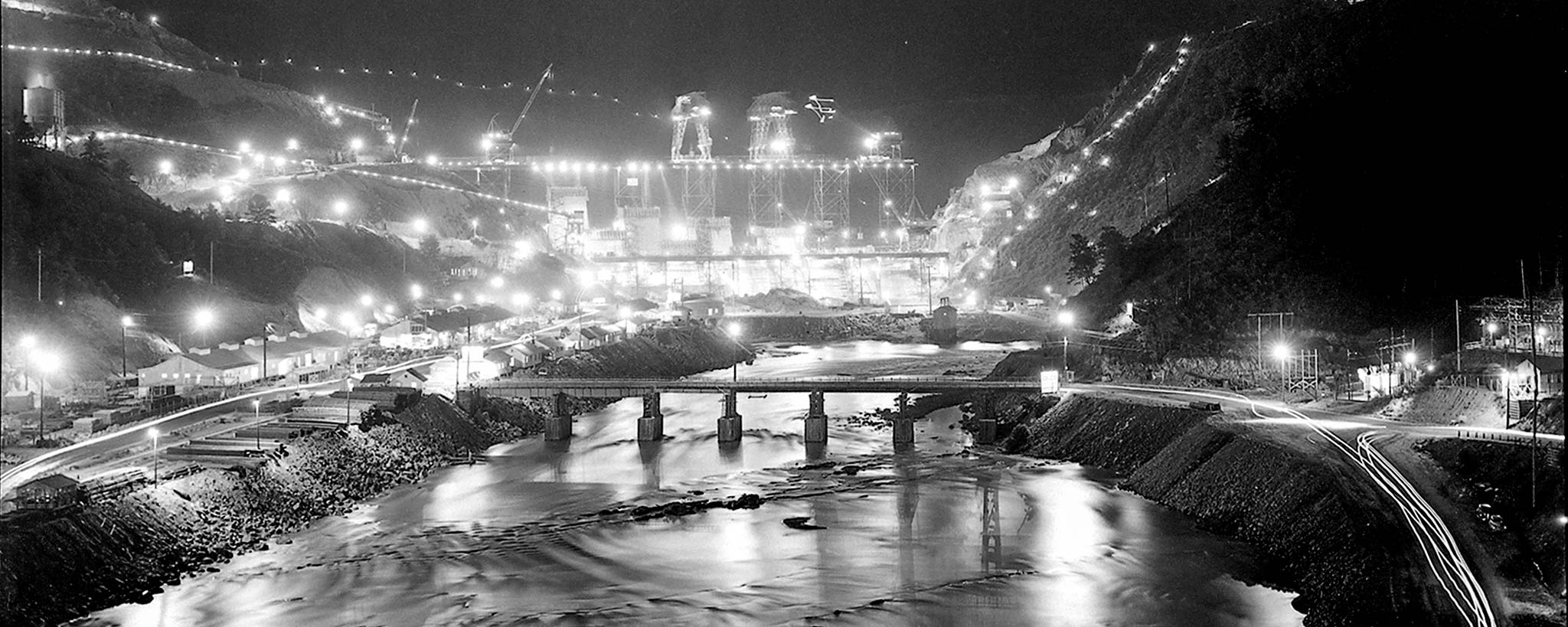
Power to Win
Read more about how one of TVA's greatest achievements — Fontana Dam — came to be built 75 years ago ... and how it powered the industries that would help end World War II.
While President Roosevelt intended for TVA to improve the quality of life of individuals in the Tennessee Valley via flood control, navigation and affordable electricity, the TVA Act also mandated TVA to provide for the national defense. In fact, TVA contributed greatly to national defense during World War II.
The United States’ entry into World War II in December 1941 created an immediate and vital need for electricity to power factories that made wartime goods, such as aluminum for warplanes. The National Defense Council called on TVA to build hydroelectric dams quickly to help win the war.
TVA moved swiftly to support war industries by engaging in one of the nation’s largest-ever construction programs. At the program’s peak early in 1942, 28,000 TVA workers were building 12 hydroelectric dams and a large steam plant. When the war ended in 1945, TVA’s generating capacity exceeded 2.5 million kilowatts, which was three times the region’s total power supply when TVA began in 1933.
Fontana Dam, celebrating its 75th year of operations in 2020, stands out as one of these emergency power projects. In a Chattanooga Times article dated December 19, 1941, Fontana is described as the “greatest construction project ever undertaken in the United States.” With a projected 2.8 million cubic yards of concrete, Fontana would be the fourth largest all-concrete dam in the country and TVA’s largest at the time — “larger than the Panama Canal or Boulder Dam” was TVA’s description of the project. Construction began on January 1, 1942, and less than three years after project authorization, Fontana was completed. Its crews consistently broke records; the most famous was setting a national record of placing 11,419 cubic yards of concrete in 24 hours (a volume equivalent to more than 2.3 million gallons of milk).
Exceptional Effort
Construction of Fontana required an exceptional organizational effort. Because the site was located in the remote mountains of western North Carolina 28 miles west of Bryson City, a railroad had to be built to transport supplies. Some joked that Fontana was the “town TVA took away from the bears.” Dormitories, houses, trailers and tents for the workers and their families were erected in the wilderness almost overnight. A hospital, library, post office, and schools were established where none had been before.
The 5,000 or so men and women who assembled at Fontana in 1942 worked in three shifts, around-the-clock, seven days a week. Because of the accelerated schedule, construction time was slashed to almost half of what it would have been in peacetime. Military marches and big band music were piped over a PA system to the camp, which featured a softball field, cafeteria, and pool halls. Mary Jane Stauffer, a member of the accounting department elaborated on life at Fontana to a Knoxville News-Sentinel reporter: “Most of us like it. We have movies four times a week, basketball games, roller skating, . . .” While the camp provided a sense of community, completion of the dam remained the number one priority. In fact, many signs reminded workers of their patriotic duty to remain on the job.
There was no celebration at the dam’s completion. Project manager, Fred C. Schlemmer, noted that “it was almost as if it had been part of the day’s work.” Power generation began on January 20, 1945, and by August the war that had been the impetus for Fontana was over. The country returned to peacetime activities, and the electricity used to power wartime industries now went to serve the development of the region. Tourists flocked to see the magnificent dam, and the remote town was turned into a resort.
Fontana still stands as one of TVA’s greatest achievements. The men and women of TVA who built Fontana helped bring World War II to a swift and decisive end, thereby saving untold lives. Moreover, they helped TVA create a freer, safer world and a more prosperous Valley by unleashing a power beyond electricity — the power of human progress.
